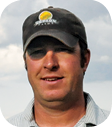Precision Farming Dealer interviewed 5 farmers from across North America to learn what standards of service and support they get from their precision farming specialists, how much training and education is useful and available and what their biggest point of pain is when integrating precision farming technology into their farm operations.
Q: What is your biggest point of pain with precision farming technology, and how is your dealer helping to overcome this challenge within your operation?

Cade Bushnell: “There’s no question that my biggest point of pain with precision farming is analyzing the data. Filing it, being able to access it easily, being able to sit down with the specialist and go through it. It just takes time. The biggest pain is the time. By the time I’m done with harvest, we’ve generated reams and reams and reams of data.
“But the real push comes to shove when I put that together with my harvest data. It’s just time, time, time and time. I’m a farmer. I use a computer like a hammer. Some people are in love with computers and will spend an hour designing a spreadsheet for something I could do in 15 minutes by hand. I’m just not that kind of guy. I’m a nuts and bolts guy. It’s the specialist’s job to analyze the data and devote the time to it.”

Mark Richards: “My biggest point of pain is teaching the older generation how to run this stuff on my farm. I kind of say that tongue in cheek, but generally, that is the biggest pain I have. The same goes for trying to get part-time operators up to speed on how to run it.
“Another point of pain is getting my operators to understand the importance of using the technology correctly and once they understand the importance, knowing how to get there and get it done without having to call me 3 times.
“How does the dealer help me overcome this challenge? They provide farmer training, but I don’t necessarily know who’s going to be driving what tractor at the time of the training, which poses another challenge.”

Paul Anderson: “Generally, answering the phone is the best thing that dealers can do to overcome my precision technology pains. I have so many screens in my tractor. That shows me the pain of working with legacy systems.
“The right hand side of my cab is pretty busy, but we’re trying to migrate most of the older hardware over to the 20/20 monitor. All that’s left to run on our 2630 monitor is the liquid system on the planter. Once I have Precision Planting’s individual row-control fertilizer for the planter next year, I’ll be able to say goodbye to the 2630. We really like the simplicity of the insights we get from FieldView and I really hope the Deere/Precision Planting relationship works out. My Precision Planting dealer has already lost one of his competent technicians to a Deere dealer.”

Willis Jepson: “My biggest point of pain with precision technology is tied to the patchwork fabric of having a Deere tractor and maybe a Case IH implement or using Apex and trying to get data over in Raven’s Slingshot. We’re using the Climate Pro this year, but trying to get everything working together can make me want to pull my hair out.
“I hope as time goes by, the industry standard will change to where that gets easier. But at the same time, each company wants me using all of its equipment so it’s like I have to pick a road and pretty much stick to it.
“I’ve also got four sets of eyes looking at my farm data right now, including my dealer and my agronomists. I’ve been able to get all of them in the same room before to talk about how we’re going to move forward and what we want to do. It’s helpful when I can physically get everyone together and on the same page and say, ‘Look, this is what we’re trying to accomplish; this is why we’re doing all this.’
“Ultimately, all of this has to make us a dividend. It has to help us make better decisions and it has to make money to pay for the effort and pay for the hardware and software and everything involved.”

Bret Margraf: “I think my biggest point of pain is when I bring other people in for a day or a weekend to work on the farm. Sometimes it’s even my dad. There are generational gaps. They have to be retrained. I make all the decisions and all the purchases when it comes to the equipment and technology, so I know exactly why I’m adding certain functions in a system to meet a need.
“The dealer I work with does a really good job. He’s inventive and creative and I don’t feel like he’s out to sell me the latest product every time I talk to him. I can go to him with an idea and say, ‘Hey, I’m interested in this new product. Should I invest in it?’ and he’ll say, ‘No, why don’t you wait a while. Wait until they get the bugs out of it.’ I think that’s great. But I spend a lot of money with him too, so I expect that level of service and honesty to keep my business.”






